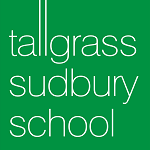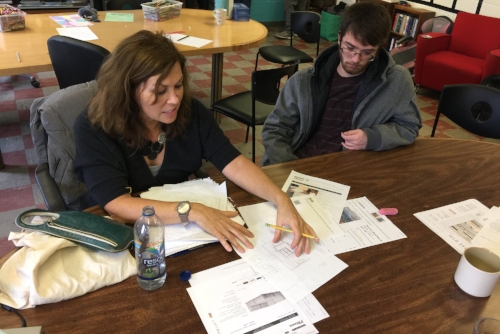A student at Tallgrass asked me recently, “If you could do anything to change the direction our country is going in, what would you do?” As a school, we don’t take political positions, but the contentious election has naturally been on people’s minds.
I said, “I would let people under 18 vote.”
Our school ballot box, used for staff and clerkship elections.
I said that if your goal is to create social change, letting young people have a real voice would be the best way to make it happen more quickly. Studies show that attitudes about issues like race and LGBT rights split clearly along generational lines, with younger people more and more in favor of equality for everyone.
We talked through the pros and cons: Should you have to prove yourself competent to vote? What about adults who aren’t well-informed—they don’t have to prove themselves. What if parents tried to influence their kids’ votes?
In the 1960s, political pressure lowered the voting age from 21 to 18, since 18-year-olds were being sent to fight and die in Vietnam, yet had no voice in choosing the leaders of the country. Fifty years later, that same issue is on the minds of some Tallgrass teenagers, who are worried about being forced to fight in a possible war started by people that they never would have voted into office. (NB: At least one student thought Hillary Clinton would have been equally bad if not worse.) They were angry that they couldn’t vote in this election, even though they will have to live with—and be personally affected by—the results.
Could we lower the voting age again? Should we? Takoma Park, Maryland, lowered the voting age for municipal elections to 16 in 2013, and in some other cities those 16 and up can vote in school board elections.
The chair of our school aesthetics and use committee (right) consults with an interior designer about changes to the school.
Unfortunately, I don’t think anyone at the national level is seriously considering lowering the voting age. But at Tallgrass and other Sudbury schools, kids CAN vote—and they vote on real issues, with their votes equal to those of adults. When we’re talking to people about our school, we often point out that the kids far outnumber us—only four adults are eligible to vote at school meeting, versus about 20 students. Students vote on everything from field trips, to the budget, to who the staff should be. As in the real world, not everyone chooses to vote on every issue. But when they do vote, they take their votes seriously, weighing the issues to the best of their ability.
We say that kids are equal here—and we mean it.


